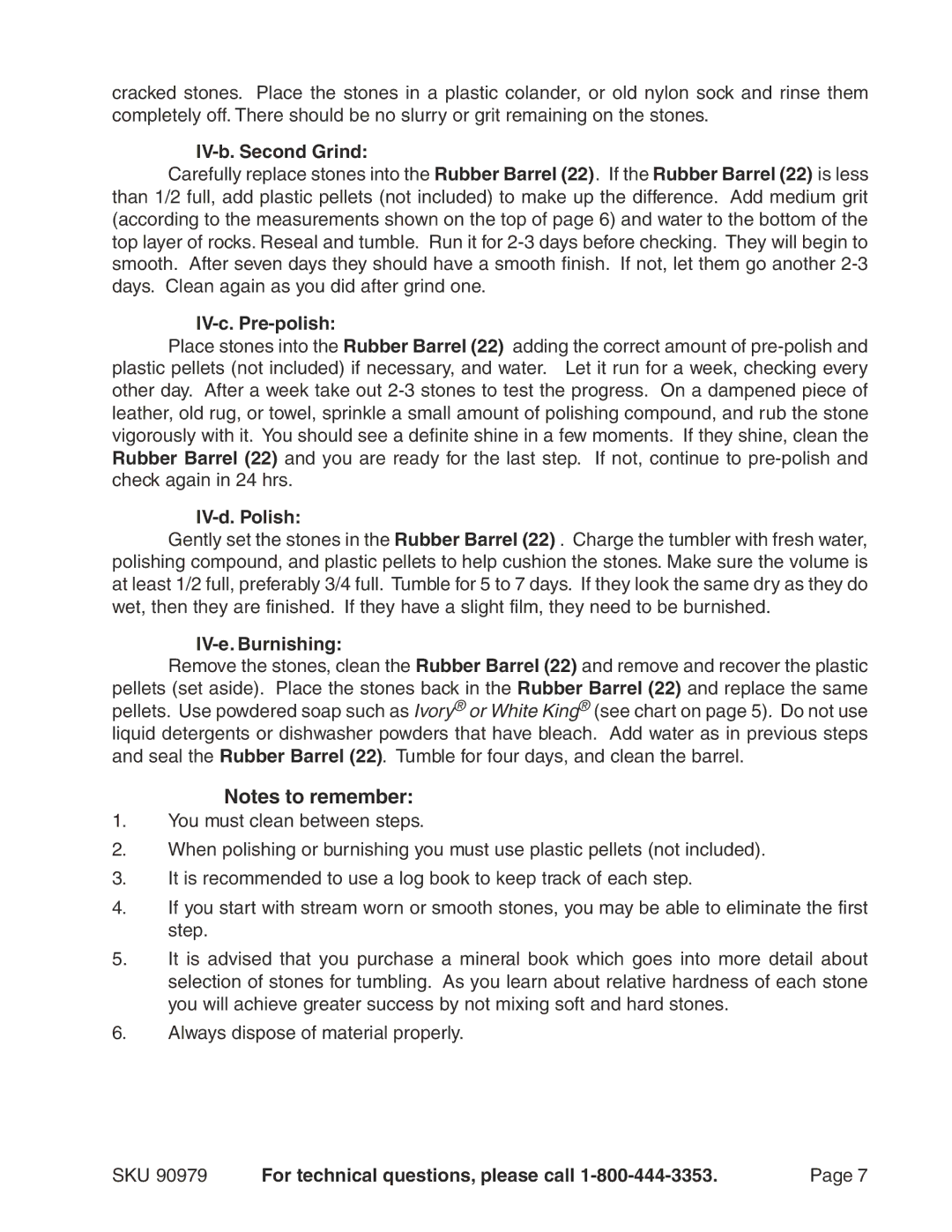cracked stones. Place the stones in a plastic colander, or old nylon sock and rinse them completely off. There should be no slurry or grit remaining on the stones.
IV-b. Second Grind:
Carefully replace stones into the Rubber Barrel (22). If the Rubber Barrel (22) is less than 1/2 full, add plastic pellets (not included) to make up the difference. Add medium grit (according to the measurements shown on the top of page 6) and water to the bottom of the top layer of rocks. Reseal and tumble. Run it for
IV-c. Pre-polish:
Place stones into the Rubber Barrel (22) adding the correct amount of
IV-d. Polish:
Gently set the stones in the Rubber Barrel (22) . Charge the tumbler with fresh water, polishing compound, and plastic pellets to help cushion the stones. Make sure the volume is at least 1/2 full, preferably 3/4 full. Tumble for 5 to 7 days. If they look the same dry as they do wet, then they are finished. If they have a slight film, they need to be burnished.
IV-e. Burnishing:
Remove the stones, clean the Rubber Barrel (22) and remove and recover the plastic pellets (set aside). Place the stones back in the Rubber Barrel (22) and replace the same pellets. Use powdered soap such as Ivory® or White King® (see chart on page 5). Do not use liquid detergents or dishwasher powders that have bleach. Add water as in previous steps and seal the Rubber Barrel (22). Tumble for four days, and clean the barrel.
Notes to remember:
1.You must clean between steps.
2.When polishing or burnishing you must use plastic pellets (not included).
3.It is recommended to use a log book to keep track of each step.
4.If you start with stream worn or smooth stones, you may be able to eliminate the first step.
5.It is advised that you purchase a mineral book which goes into more detail about selection of stones for tumbling. As you learn about relative hardness of each stone you will achieve greater success by not mixing soft and hard stones.
6.Always dispose of material properly.
SKU 90979 | For technical questions, please call | Page 7 |
